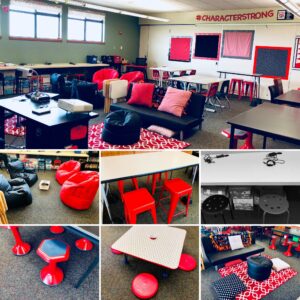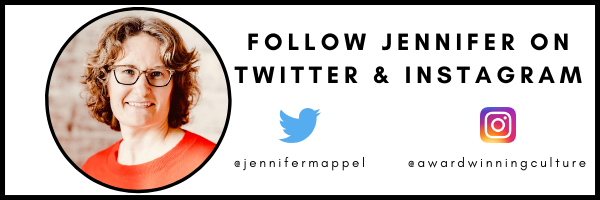In This Post:
- Success on New Year’s resolutions rarely ever happens. But why?
- The “New Year’s resolution” model doesn’t work for educational ideas either.
- Four steps to successfully implementing the new idea you’re considering.
January is often a strange time at my gym. New Year’s Resolutionists show up in droves. They pack into our small yoga studio spaces with their oversized enthusiasm and zest for change. They pair an exercise membership with a new and improved diet plan. Unfortunately, this energy for healthy living rarely sticks as they move to a new focus after a couple months. By March, these born again yogi’s settle back into their long standing routines and habits. Their implementation is not successful. I can relate to this short lived passion for self improvement.
When I was young I longed to be thin. Each year, I went on a diet in January, convinced that this would be the one that would make all my body image dreams come true. I would convince myself that transformation was on the other side of starving myself. And I usually lost a little weight for awhile. But before long, I had drifted back into old patterns that left me filled with disappointment and self loathing. Finally, I came to the epiphany that for me: DIETS DON’T WORK!
Diets were always unsuccessful because they perpetuated a temporary fix model. They never forced me to examine my WHY for healthy living.
What eventually worked for me was to change my lifestyle. This new change includes exercise on a daily basis and a plant-based diet. I made rules for myself that I stick to. I only managed to do this because I took advice from professionals like Steven Gundry MD and then really pushed myself to succeed.
- Wake up at 4:00am everyday and take my dog for a 3 mile walk.
- Do yoga 1-2 times a week at a studio.
- Eat a healthy diet.
- No food after 6pm.
The reason that this finally worked for me was that I did my research. I read articles and watched documentaries about how to live a healthy lifestyle. And I almost NEVER weigh myself.
Coming to the conclusion that I needed to understand the why behind diet, exercise, and a healthy lifestyle has changed my perspective on learning and living in profound ways.
What in the world does this have to do with education?
Healthy living, just like learning, is not something you arrive at. It’s an infinite game that we never win or lose. The goal is to keep improving by bringing meaning and relevance to our lives. It’s about getting a little better each day.
Healthy living, just like learning, is not something you arrive at. It's an infinite game that we never win or lose. Share on XIn education, we have the latest trend or curriculum, and everyone wants to do it. We go on Pinterest and make our room or lesson look like the cool new idea. Often, we don’t really look at the why behind the new trends.
Some educators even find themselves playing the comparison game. One that’s eerily similar to a teen’s quest to be as thin as the model on TV or Instagram. Educators discover the latest technology or idea that someone else is using, and they believe it is the key to being the educator they’ve always dreamed of.
But living in educational comparison and chasing the latest new “best practice” only ensures a healthy diet of empty calories.
In order to truly TEACH BETTER we must uncover the WHY.
In my own experience, one of the new ideas that struck me was flexible seating. When I was entering my 20th year of teaching, I heard about flexible seating. I liked the idea and thought it might work with my students. So I set my sights on finding out the why behind this bold teaching move.
Successful Implementation Step 1: Do your research.
When you have a new concept, curriculum or idea your first step needs to be finding the expert on that topic.
For example with flexible seating I went to Top Dog Teaching Kayla Dornfeld’s website to research about flexible seating. I found a TEDx talk that she did and found articles and blogs she had written about the subject (and more).
After finding her site, I went to Edutopia and read articles for and against flexible seating. I wanted to hear respected educators on both sides of the argument and see what worked and didn’t work.
I then intentionally visited a few coffee houses. While I don’t drink coffee per se, I wanted a first hand look at what makes places like Starbucks such a powerful work environment.
After finding the experts you now need to discover the why behind the movement. You may need to look at outside sources that get to the bases of the movement. For example, I read books like the Innovator’s Mindset and Future Driven to help me understand the why behind innovation and what students will face in the future.
Successful Implementation Step 2: Make a decision.
After researching, it’s critical to decide if you think this is right for your students and if it is something you are passionate about. Also, you need to make sure that it matches your own why.
Regarding flexible seating, I was able to understand the why. Students are now the center of instruction and student voice and choice where incorporated into every aspect of the learning environment.
Furthermore, enhancing student agency fostered my ability to support students in discovering and developing their joy of learning.
Successful Implementation Step 3: Go all in and do it!
Implementation involves much more than just purchasing the item or changing something in your room. You must change HOW you’re actually teaching.
For me, this involved changing my teaching style to include more student centered activities. The students literally and figuratively needed to be the center of everything we did in class.

My classroom with flexible seating at the beginning of the school year.
For flexible seating, this looked like me doing only mini-lessons of direct instruction and the students being much more independent with their learning. They also needed to be able to see things from all angles in my room, so I had a Smartboard in the front and then a TV on the side of my room. This allowed them to see from every angle.
It’s also important to get student buy in and make sure they understand the why behind the new idea. They will need to be given choice and voice in the decisions.
For flexible seating, the students came up with class norms around the furniture. We answered a few questions together.
- What should it look like to be “on-task”?
- How should you choose your seat for the day?
We also had a discussion about why they are sitting this way. I reiterated that it is not just because it looks cute or comfortable. We are doing it because you can choose the best way to learn.
As an ELA teacher, we are sometimes writing essays, so students choose to sit in a desk that day. When we are reading a novel another day, they can choose to sit on the couch where it is more comfortable for that activity.
Successful Implementation Step 4: Reflect.
Whenever you implement a new idea, you need to reflect on the effectiveness.
At mid-year, I give my students a survey about how they are feeling when it comes to flexible seating and any changes they feel we need to make.
This year, my students told me that they seemed to work better when they could move and feel more comfortable, so they wanted less traditional desks and more standing tables and couches.
If you feel something isn’t working, come up with a solution for the problem within your new system. Don’t give up on the whole idea!
[scroll down to keep reading]Always Go Back to the Why
If you are thinking about trying something new, remember to discover the why behind the movement.
Understanding the theory, practicality, and supporting features of the innovation is vital to success.
Change is more successful when we focus on these four steps. With a detailed plan for creating positive educational change, we’re able to capitalize on the synergy of new beginnings.
About Jennifer Appel
Jennifer is a teacher and coach at Enterprise Middle School. She has been teaching for 21 years. Her passion for education comes from growing up in an education driven family (4th generation) and wanting to help and serve others. She is now driven to create an environment where all students are able to learn and become passionate about serving others.
In 2018, her school Enterprise Middle School known as “Wildcat Nation” was awarded the ASCD Whole Child Award for the State of Washington and the Global “Class Act Award” for creating a culture of excellence through kindness, service, and empathy. Additionally, they were selected as a finalist in the 2019 PBIS Film Festival and took top prize in the Community, Parents, and Staff category.
Jennifer has written blogs and lesson design for CharacterStrong. She was selected for the Washington State Reading Cadre and spent 10 years teaching graduate and undergraduate classes at Heritage University. Additionally, she’s spoken at state and national conferences on PBIS, Student Voice, and School Culture.
In 2018, Jennifer helped launch a blog about School Culture and helped roll out a student-led leadership podcast called Award Winning Culture: Hosted by Wildcat Nation, which can be subscribed, listened or reviewed on iTunes Apple Podcasts, Stitcher, Google Play, Spotify, PodBean, and Libsyn.
Jennifer is also a member of the Teach Better Speakers Network.



